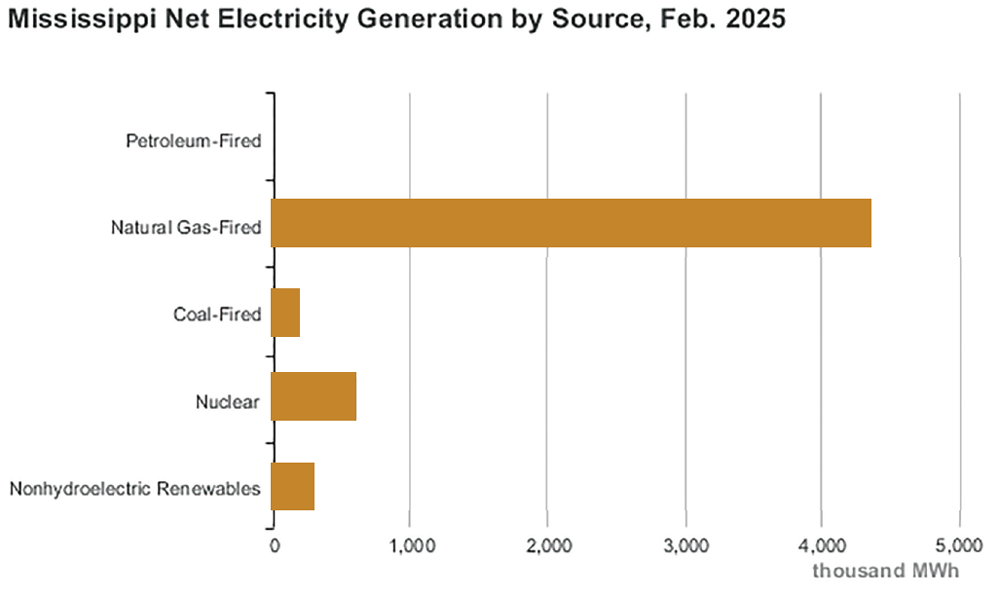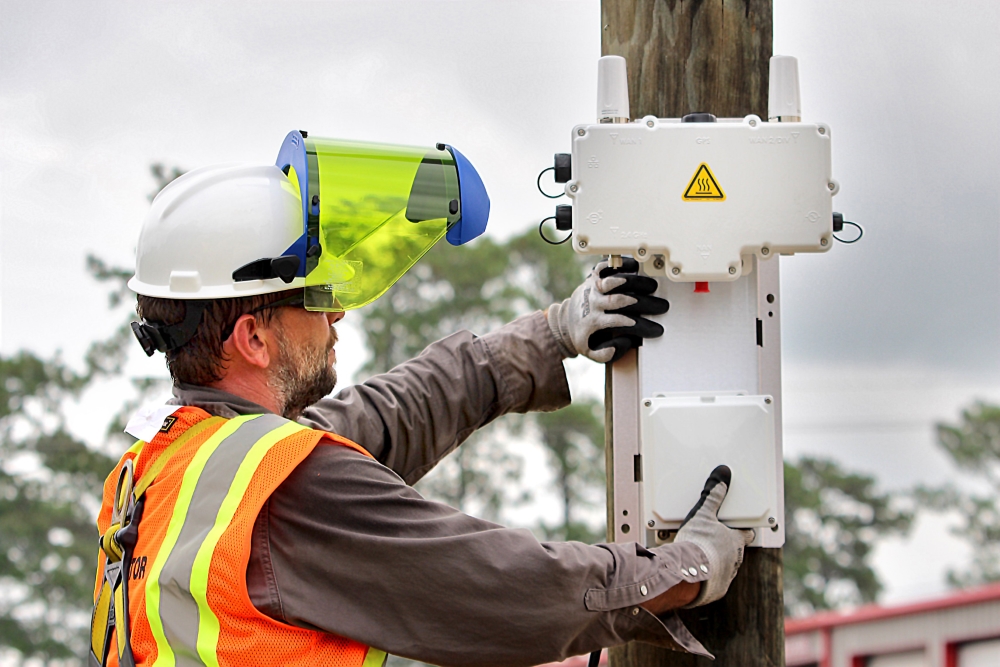When it comes to providing a stable and affordable supply of energy to industrial customers, Mississippi stacks up favorably compared to other states.
According to the U.S. Energy Information Administration (EIA), Mississippi has the fifth-lowest average gasoline prices in the country. Natural gas, nuclear power and coal are the primary energy sources for industrial production in the state, with natural gas consumption topping 600 trillion BTUs in 2022.
The 1,400-megawatt Grand Gulf Nuclear Power Station in Port Gibson, Mississippi, is the largest single-reaction nuclear power plant in net summer generating capacity in the U.S., according to the EIA. This one is responsible for generating approximately 16% of the state’s total electricity.
And thanks to state leadership and regulatory body approvals, more electric generating capacity is being added statewide. On April 11, Entergy Mississippi announced that it had selected a site on West County Line Road in Ridgeland for new power generation. The company plans to build a new advanced combined-cycle combustion turbine natural gas plant on this site. The $1 billion investment will generate 760 megawatts of power upon buildout and full operation in 2029, the company stated.
The project comes on the heels of a separate announcement last October to build the Delta Blues Advanced Power Station in Greenville, Mississippi. That project will be a 754-megawatt facility and will represent a $1.2 billion investment – the largest power plant project to date in Mississippi.
Both of these projects come at a time when Mississippi lawmakers and energy experts are calling for the creation of additional nuclear power generating capacity in the state. During a meeting last October with the Mississippi Senate Energy Committee at the State Capitol in Jackson, leaders from Entergy and the Tennessee Valley Authority (TVA) met with lawmakers to discuss the importance of using new technology to advance construction of nuclear generating capacity in the state.

Mississippi Net Electricity Generation by Source, 2025.
Source: U.S. Energy Information Administration
“Nuclear is the future,” Senate Energy Committee Chairman Joel Carter said.
At that same meeting, a representative of TVA said that nuclear power accounts for 42% of the company’s grid, which includes Northeast Mississippi. As TVA looks to decreases its carbon footprint to meet certain net zero goals by 2050, the company indicated that it would consider nuclear energy expansion in that mix. TVA currently operates three nuclear facilities. Two are in Tennessee, and one is in Alabama.
Natural gas accounts for about 76% of Mississippi’s electricity net generation and is the primary fuel source for nine of the state’s 10 largest power plants.
Source: U.S. Energy Information Administration
There are other factors, however, that make Mississippi a desirable destination for industrial power customers, according to the EIA:
- Mississippi is one of a handful of states with large underground salt caverns capable of storing natural gas. In fact, Mississippi has about one-fourth of total U.S. underground salt cavern natural gas storage capacity.
- Mississippi’s Pascagoula oil refinery is the nation’s 11th-largest refinery, with the capacity to process about 356,000 barrels of oil per day into automotive gasoline, diesel fuel and other petroleum products. Together, the state’s three refineries account for roughly 2% of the nation’s total refining capacity.
- Natural gas accounts for about 76% of Mississippi’s electricity net generation and is the primary fuel source for nine of the state’s 10 largest power plants.
- Mississippi ranks 13th in total energy consumption per capita; 16th in total energy expenditure per capita; 22nd in electricity production; 21st in natural gas production; 15th in crude oil production; and 15th in coal production.

